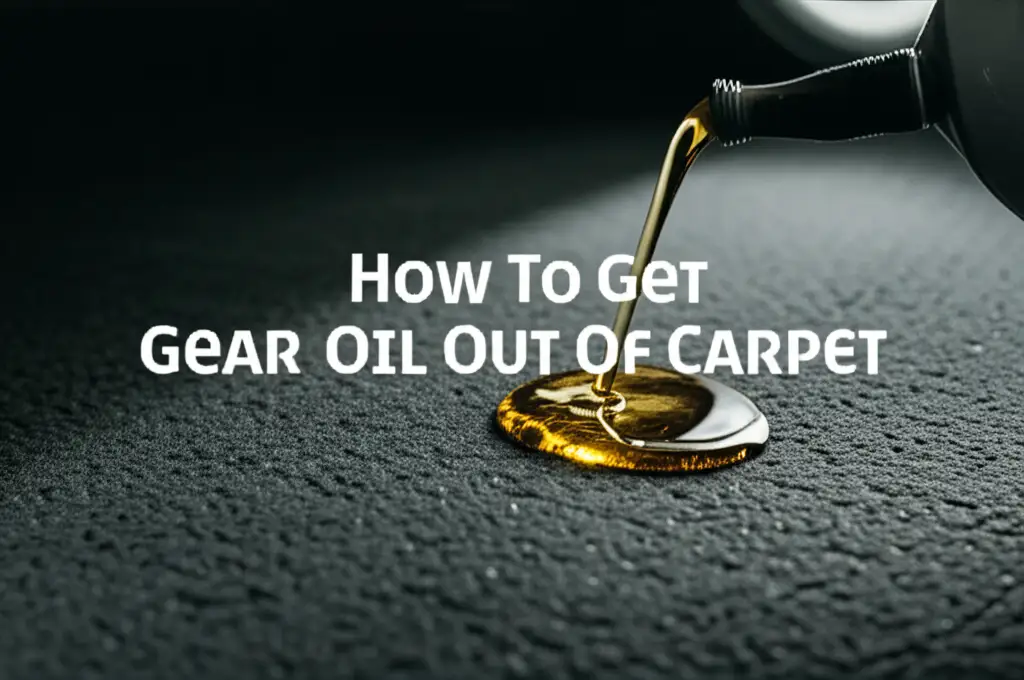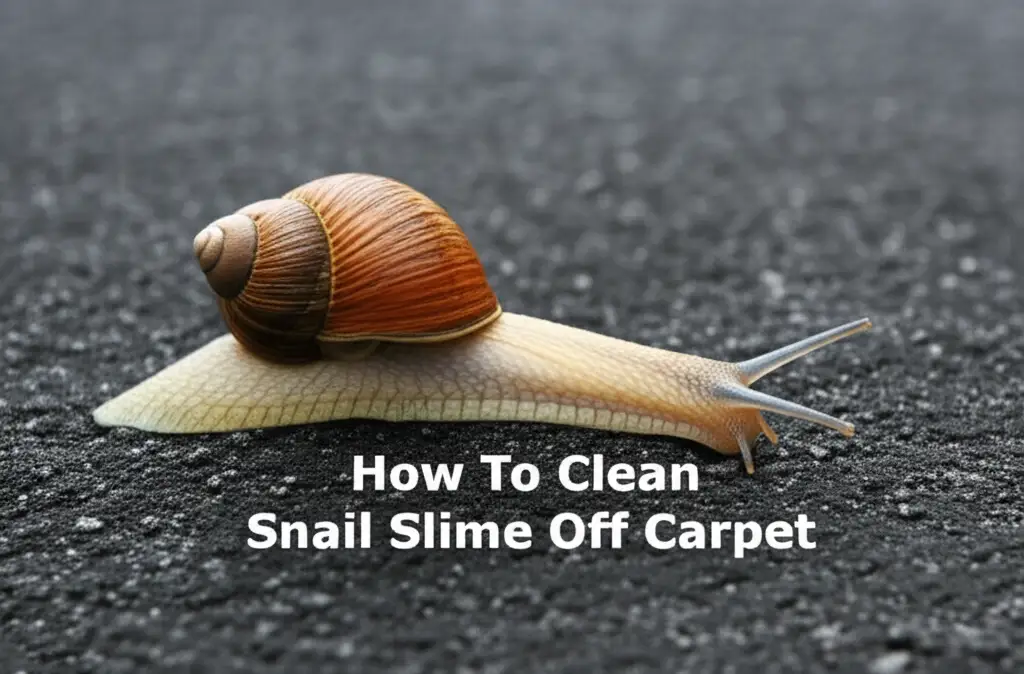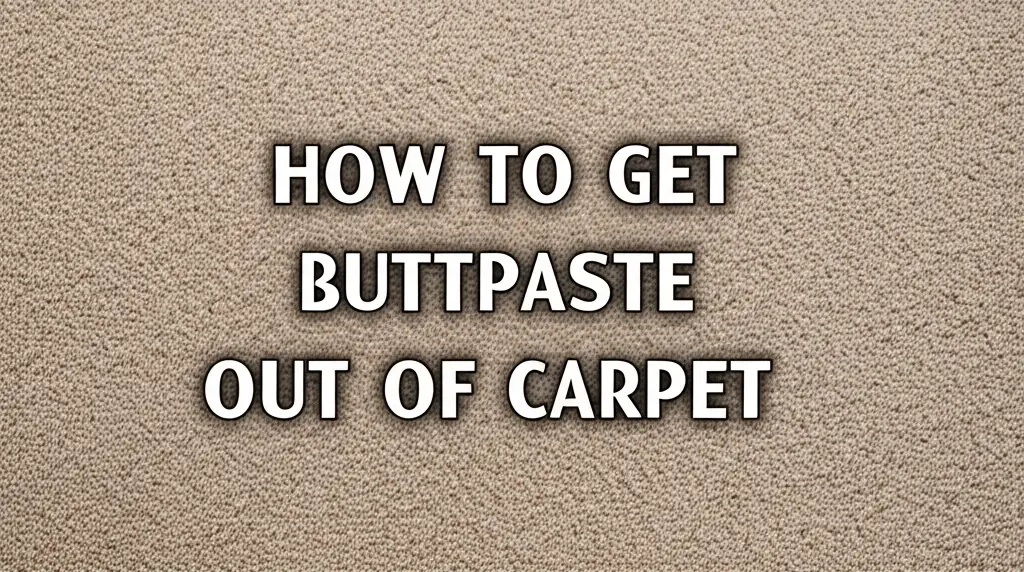· Elira Thomsen · Stain Removal · 19 min read
How To Get Gear Oil Out Of Carpet

How To Get Gear Oil Out Of Carpet
Spilling gear oil on your carpet can feel like a major disaster. This heavy, sticky fluid leaves a dark, stubborn stain and a distinct smell. It is unlike lighter oils, as gear oil is designed to withstand extreme pressure and heat, making it especially tough to remove. But do not lose hope! I am here to tell you that with the right approach and a bit of patience, you can effectively get gear oil out of carpet.
This guide provides step-by-step instructions. We will cover immediate actions, effective cleaning solutions, and techniques to restore your carpet’s look. You will also learn how to tackle lingering odors and prevent future spills. Let’s dive in and make that carpet clean again.
Takeaway
Getting gear oil out of carpet requires prompt action and specific methods.
- Blot excess oil immediately using clean cloths or paper towels.
- Apply absorbent materials like baking soda or cornstarch to soak up remaining oil.
- Use a cleaning solution, such as dish soap, to break down the oil.
- Rinse the area thoroughly and blot dry.
- Repeat steps if necessary for stubborn stains or odors.
Clear and Concise Answer
To get gear oil out of carpet, first blot excess oil, then apply an absorbent powder like baking soda to soak up more. Follow this by applying a solution of dish soap and warm water, gently working it into the stain. Rinse the area thoroughly with clean water, blot dry, and repeat until the stain and odor are gone.
Immediate Action is Key: First Steps to Tackle Gear Oil Spills
When gear oil spills on your carpet, time is not on your side. The quicker you act, the better your chances are of preventing the stain from setting deeply. Gear oil is thick and can bond quickly with carpet fibers. This makes immediate action critical for successful removal. Do not panic; calmly gather your supplies.
Your first goal is to remove as much excess oil as possible without spreading it further. Think of it like blotting a liquid spill, not scrubbing. Scrubbing will push the oil deeper into the carpet and spread it around. This makes the stain larger and harder to clean. Always work from the outside of the stain inward. This helps to contain the spill.
After removing the bulk of the liquid, you need to draw out the oil that has already started to absorb. Common household items can act as powerful absorbents. You will find that these steps prepare the carpet for a deeper clean. They significantly reduce the amount of oil you need to tackle with cleaners.
Blotting Techniques for Excess Oil
Start by getting a stack of clean, white cloths or paper towels. Colored cloths might transfer dye to your carpet, which creates a new problem. Gently press the cloth onto the oil stain. Do not rub or scrub. The goal is to lift the oil from the carpet fibers.
Replace the cloth as it becomes saturated with oil. You will see the oil transferring from the carpet to the cloth. Keep blotting until no more oil transfers to a fresh cloth. This process is simple but highly effective in minimizing the stain’s spread and intensity.
Scraping Excess Oil
If the gear oil spill is particularly thick or has a semi-solid consistency, you might need to scrape off the excess first. Use a dull knife, a spoon, or the edge of an old credit card. Carefully scoop up the thickest parts of the oil. Be gentle as you scrape.
Lift the oil directly up from the carpet. Avoid pushing it down into the fibers. Dispose of the scraped oil in a container, not down your drain. This step helps to reduce the volume of oil that needs absorption.
Applying Absorbent Powders
Once you have blotted and scraped away the bulk, apply an absorbent powder generously over the entire stained area. Great options include baking soda, cornstarch, talcum powder, or even cat litter. These powders work by drawing the oil out of the carpet fibers. They act like a sponge, soaking up the greasy residue.
Cover the stain completely with a thick layer of your chosen powder. Let it sit for several hours, or even overnight, if the stain is large or old. The longer the powder sits, the more oil it can absorb. After the waiting period, vacuum up the powder. You may need to repeat this step multiple times until the powder no longer looks oily. This pre-treatment step is crucial for oil stains, similar to how one might handle other greasy spills like peanut oil out of carpet or even body oil out of carpet.
Choosing and Applying the Right Cleaning Solutions
After blotting and absorbing the initial spill, you are ready to tackle the remaining oil stain with a cleaning solution. Gear oil is very greasy, so you need a cleaner that can break down its molecular structure. Many household products work well for this purpose. Always test any cleaning solution on an inconspicuous area of your carpet first. This ensures it does not cause discoloration or damage.
The key to successful stain removal at this stage is agitation. You need to gently work the cleaner into the carpet fibers. This helps it to dissolve the oil. However, remember the rule about not rubbing harshly. You are still lifting the stain, not pushing it around. Applying cleaning solutions in measured amounts also helps. Too much liquid can saturate the carpet backing, leading to other issues like mildew.
Different types of cleaners offer various strengths for oil removal. From simple dish soap to more specialized solvents, selecting the right one depends on the severity of the stain and what you have on hand. Always ensure good ventilation when using stronger chemical cleaners. Your health and safety come first during any cleaning task.
Dish Soap Method for Oil Stains
Dish soap is a surprisingly powerful cleaner for oil stains because it is designed to cut through grease. Mix one tablespoon of liquid dish soap with two cups of warm water. Use a clean, white cloth or sponge, dip it into the solution, and gently blot the stain. You will see the stain lifting.
Work from the outside edge of the stain inward to prevent spreading. Rinse your cloth frequently or use fresh sections as it picks up oil. Continue blotting until the stain appears to be gone. This method is safe for most carpets and usually effective for fresh or smaller gear oil spills. It is often the first go-to for many oil-based stains, as a good dish soap can clean oil in carpet effectively.
Using Solvent Cleaners
For older, larger, or more stubborn gear oil stains, you might need a stronger approach. Solvent-based cleaners are designed to dissolve grease and oil. Common options include mineral spirits, Goo Gone, or specific automotive degreasers formulated for carpets. Read the product instructions carefully before use.
Apply a small amount of the solvent to a clean white cloth. Blot the stained area gently. Do not pour the solvent directly onto the carpet. Work in small sections, always blotting and lifting. Solvents can be strong, so ensure the room is well-ventilated. After the stain is gone, blot the area with a clean cloth dampened with plain water to rinse away residue. If you have removed other tricky oil-based substances like fragrance oil from carpet, you might already be familiar with the power of solvents.
Natural Alternatives for Tough Stains
If you prefer natural cleaning solutions, vinegar and baking soda can work together to combat gear oil. After the initial absorbent powder treatment, make a paste with baking soda and a small amount of water. Apply this paste over the remaining stain. Let it sit for 30 minutes to an hour.
Then, spray the area with white vinegar. A chemical reaction will occur, helping to lift the stain and neutralize odors. Blot the area with a clean cloth. You might need to repeat this process several times for the best results. Finish by rinsing with clear water and blotting dry. This method is eco-friendly and safe for households with pets or children.
Advanced Techniques for Stubborn Gear Oil Stains
Sometimes, even after multiple attempts with common cleaning solutions, a gear oil stain might persist. This is especially true for older stains or very large spills. When basic methods are not enough, you may need to explore more advanced techniques. These methods often involve specialized equipment or professional expertise. Always consider the type of your carpet before attempting advanced cleaning. Some materials, like wool or silk, can be sensitive to heat or strong chemicals.
Professional help is always an option if you feel overwhelmed or are worried about damaging your carpet. They have powerful tools and specific knowledge to handle tough stains. Before calling a professional, ensure you have tried all the steps you are comfortable with. Advanced techniques often target deeply embedded oil. They also help to restore the carpet’s original texture and color.
Steam Cleaning Cautions
A steam cleaner can be effective for dissolving tough grease stains. The hot steam helps to liquefy the gear oil, making it easier to extract. However, use caution. Too much heat can set some stains permanently, especially if the oil has been on the carpet for a long time. It can also damage certain synthetic fibers or weaken the carpet’s backing.
If you decide to use a steam cleaner, first perform a spot test in an hidden area. Use the lowest heat setting that is effective. Work slowly and use the machine’s suction to remove the hot water and dissolved oil immediately. Do not oversaturate the carpet. For very heavy oil, you might need to pre-treat with a solvent cleaner before steam cleaning.
When to Call a Professional
There are times when a DIY approach is not enough. If the gear oil stain is very large, has been there for a long time, or if you have a delicate or expensive carpet, calling a professional carpet cleaner is a wise decision. They possess specialized equipment, like powerful extraction machines, and industrial-strength cleaning agents not available to the general public.
Professionals also have expertise in identifying carpet types and choosing the safest, most effective cleaning method. They can often remove stains that seem impossible. While professional cleaning comes at a cost, it can save your carpet and prevent permanent damage. Think of it as an investment in your home’s appearance. Professional cleaning can also include methods like dry cleaning a carpet, which may be suitable for certain oil stains.
Persistence is Key for Removal
Stubborn gear oil stains may not disappear after a single treatment. You might need to repeat the cleaning process multiple times. Each repetition helps to lift more of the oil out of the carpet fibers. Do not get discouraged if you do not see immediate results. Patience and persistence are crucial for successful stain removal.
Between treatments, allow the carpet to dry completely. This helps you assess the progress of your cleaning efforts. Reapply absorbent powders or cleaning solutions as needed. Over time, you will see the stain fade and eventually disappear. Your hard work will pay off.
Eliminating Odor and Residue After Gear Oil Removal
Removing the visible gear oil stain is only half the battle. Gear oil leaves a distinct, strong odor that can linger long after the stain is gone. This smell can be unpleasant and pervade your living space. Additionally, cleaning products and dissolved oil can leave behind residues. These residues might attract dirt, leading to new stains in the same spot.
Tackling both the odor and any leftover residue is essential for a truly clean carpet. Odor removal often involves neutralizing the smell at its source, not just masking it. Residue removal ensures your carpet stays clean and vibrant. It also helps preserve the carpet fibers from sticky buildup. Taking these final steps ensures your carpet feels fresh and looks completely restored.
Odor Neutralization Techniques
Gear oil’s strong smell comes from its petroleum base. To neutralize it, you need agents that break down odor-causing molecules. Baking soda is excellent for this. After the stain is visibly gone, sprinkle a generous layer of fresh baking soda over the affected area. Let it sit for several hours, or even overnight, to absorb lingering smells.
For more potent odors, consider using an enzymatic cleaner. These cleaners contain beneficial bacteria that “eat” odor-causing organic matter. Follow the product instructions for application. Good ventilation is also important. Open windows and use fans to air out the room while the carpet dries. Repeat the baking soda treatment or enzymatic cleaner application if the odor persists.
Eliminating Sticky Residue
Sometimes, after cleaning, the carpet fibers might feel stiff or sticky due to leftover cleaning product or dissolved oil residue. This residue can attract dirt quickly, making the spot look dirty again. To remove this, fill a spray bottle with plain warm water. Lightly mist the cleaned area.
Then, blot the area with a clean, dry white cloth. This process helps to lift any remaining residue from the fibers. You might need to repeat this blotting and rinsing several times until the carpet feels soft and clean. Avoid oversaturating the carpet during this step.
Preventing Future Gear Oil Spills and Protecting Your Carpet
Preventing future gear oil spills is always easier than cleaning them up. Most gear oil spills inside a home occur during maintenance of vehicles or machinery. Being proactive about spill prevention can save you significant time and effort. It also helps preserve the life and appearance of your carpet. Simple precautions can make a big difference in avoiding accidental drips and leaks.
Even with precautions, accidents can happen. Having a plan in place for quick action is your best defense. Knowing what materials to use and how to react immediately can turn a potential disaster into a minor inconvenience. Protecting your carpet involves both preventative measures and readiness for unforeseen events. Investing in simple protective gear can shield your carpet from various spills, not just gear oil.
Protecting Your Carpet During Maintenance
If you are working on car parts or machinery indoors, always lay down protective barriers. Use old newspapers, heavy-duty tarps, or specialized garage mats under your workspace. These barriers catch any drips or spills. For smaller tasks, a large cardboard box opened flat can also serve as a good temporary shield.
Consider using a drip pan directly under any part that might leak gear oil. Keeping a roll of paper towels or old rags nearby ensures you can wipe up small drips immediately. By isolating your work area, you greatly reduce the risk of gear oil reaching your carpet. Protecting your carpet can also involve using what you can put over carpet to protect it.
Speedy Response is Crucial
Even with preventive measures, accidents occur. If gear oil spills, react immediately. Do not delay. The longer gear oil sits on the carpet, the deeper it penetrates the fibers and the harder it becomes to remove. Keep cleaning supplies like absorbent powders and clean cloths readily accessible.
This allows you to begin the cleanup process within minutes of a spill. A swift response can mean the difference between a minor cleanup and a permanent stain. Educate family members about the importance of immediate action as well.
Regular Carpet Maintenance
Regular vacuuming and professional carpet cleaning can also help your carpet resist stains. Clean carpets have fewer open spaces for spills to penetrate deeply. Vacuuming removes loose dirt that can mix with oil and create a larger, tougher stain. Professional cleaning treatments can add a protective layer to carpet fibers.
This makes them less absorbent to liquids. While not foolproof against heavy gear oil, a well-maintained carpet is generally more resilient. Routine care contributes to the overall longevity and appearance of your carpet, making it less vulnerable to all sorts of spills.
Common Mistakes to Avoid When Cleaning Gear Oil from Carpet
Cleaning gear oil from carpet can be challenging, and it is easy to make common mistakes that worsen the situation. Understanding what not to do is as important as knowing what to do. Incorrect cleaning techniques can spread the stain, push the oil deeper into the fibers, or even cause permanent damage to your carpet. This section highlights typical pitfalls people encounter when trying to remove heavy oil stains.
Avoiding these errors will save you time, effort, and potential frustration. It also helps protect your carpet from unnecessary harm. Always prioritize safety when using any cleaning products. Make sure to read labels and follow all instructions carefully. A smart approach helps ensure a successful outcome and keeps your carpet looking its best.
Do Not Rub the Stain
One of the biggest mistakes people make is rubbing the oil stain. Rubbing pushes the gear oil deeper into the carpet fibers and spreads it to a larger area. This makes the stain much more difficult to remove. Always blot the stain instead. Use a clean cloth and press down firmly, lifting the oil rather than scrubbing it. Work from the outside edges of the stain towards the center. This method helps to contain the spill and prevents it from spreading further.
Avoid Harsh or Incompatible Chemicals
Do not use cleaning products that are not designed for carpets or for oil stains. For instance, bleach can permanently discolor your carpet. Mixing different cleaning solutions can also create dangerous fumes or ineffective concoctions. Always check the cleaning product’s label to ensure it is safe for your carpet type and effective against oil. Test any new cleaner on a hidden spot first. This simple step prevents irreversible damage to your carpet’s color or texture.
Overlooking Safety Precautions
Gear oil itself can be irritating, and some cleaning solvents are flammable or emit strong fumes. Always work in a well-ventilated area when using chemical cleaners. Open windows and use fans to ensure fresh air circulation. Wear gloves to protect your skin from both the oil and the cleaning agents. Keep children and pets away from the cleaning area until it is completely dry and aired out. Proper safety measures protect your health and prevent accidents.
Not Repeating the Process
Gear oil is very thick and can penetrate deeply. One cleaning attempt is rarely enough to remove it completely. A common mistake is to stop cleaning too soon. You might think the stain is gone, only for it to reappear as the carpet dries. Be prepared to repeat the blotting, absorbing, and cleaning steps multiple times. Persistence is key. Continue cleaning until no more oil transfers to a clean cloth and the odor is gone. Drying the area between repetitions allows you to assess your progress accurately.
FAQ Section
Q1: Is gear oil harder to remove than other types of oil? A1: Yes, gear oil is generally harder to remove than lighter oils like cooking oil or body oil. It is thicker, more viscous, and often contains additives that make it resistant to high pressures and temperatures. Its dark color also makes stains more noticeable and stubborn. This requires more aggressive cleaning methods and greater persistence to fully extract from carpet fibers.
Q2: What if the gear oil stain has been on the carpet for a while? A2: Old gear oil stains are more challenging to remove because the oil has had more time to bond with carpet fibers. Start with absorbent powders, allowing them to sit for longer periods, perhaps overnight. Then, use a strong solvent-based cleaner or a dedicated automotive degreaser. Multiple applications will likely be necessary. Professional carpet cleaning might be the best option for very old, set-in stains.
Q3: Can I use a regular carpet cleaning machine for gear oil? A3: A regular carpet cleaning machine (like a steam cleaner or hot water extractor) can help, but use it with caution. The hot water can sometimes set certain types of oil stains if not extracted quickly. Pre-treat the stain with an absorbent and a solvent-based cleaner first. Use the machine to rinse and extract the dissolved oil and cleaning solution. Do not rely solely on the machine without pre-treatment.
Q4: What household products should I avoid using on gear oil stains? A4: Avoid using bleach, which can permanently discolor your carpet. Do not use extremely hot water directly on the stain without pre-treatment, as it can sometimes set the oil. Also, avoid scrubbing brushes that can damage carpet fibers or spread the stain further. Always test any cleaning product on an inconspicuous area first to ensure it does not harm your carpet.
Q5: How can I prevent gear oil spills on my carpet in the future? A5: Prevention is key. When working with gear oil, always lay down old newspapers, cardboard, or plastic sheeting to protect your carpet. Use drip pans under any parts that might leak. Store gear oil containers in a secure location, away from walking paths and where they cannot be easily knocked over. Immediately clean up any small drips or spills before they have a chance to spread.
Q6: Can gear oil permanently damage my carpet? A6: If left untreated, gear oil can cause permanent damage to your carpet. The heavy oil can degrade carpet fibers over time, leading to discoloration and a distinct, persistent odor. The stain may become impossible to remove completely if it sets in deeply for too long. Prompt action and proper cleaning methods are essential to prevent lasting damage and preserve your carpet’s appearance.
Conclusion
Dealing with a gear oil spill on your carpet can feel like a daunting task. However, by understanding the unique properties of this heavy lubricant and following a clear strategy, you can successfully restore your carpet. Remember, the most important step is immediate action. Quickly blotting and applying absorbent powders will make subsequent cleaning much easier.
As you move through the process, choose your cleaning solutions wisely. Dish soap, solvent cleaners, or natural alternatives each have their place in breaking down the stubborn oil. Do not be afraid to repeat steps. Persistence is your most valuable tool when trying to get gear oil out of carpet. By addressing both the stain and any lingering odor, you ensure your carpet is truly clean. Protect your carpet from future spills by implementing simple preventive measures. Your carpet will thank you for the effort, staying fresh and clean for years to come.





